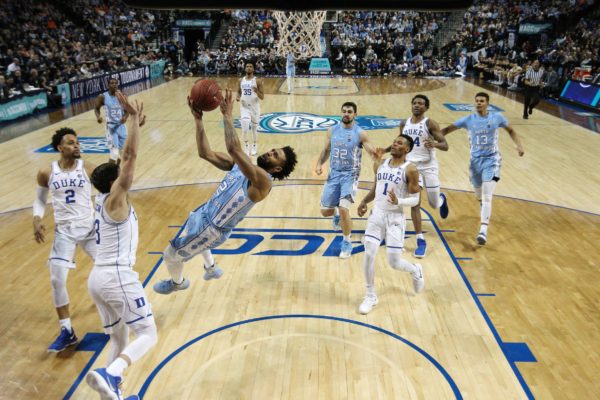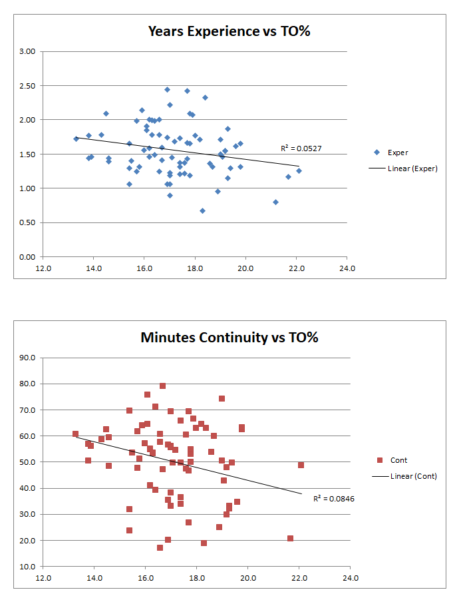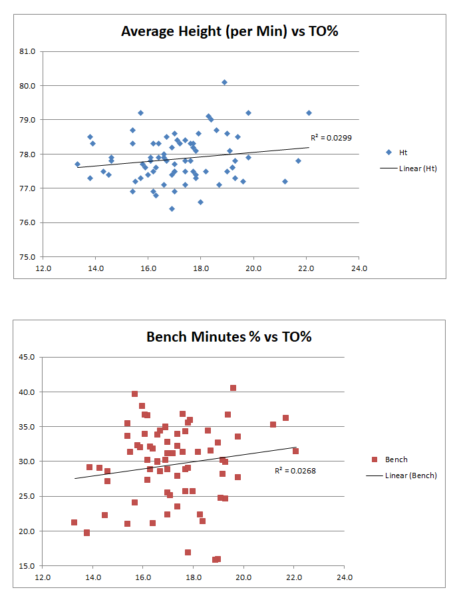Analysis: ACC Turnover Battle Drives Success
Posted by Brad Jenkins (@bradjenk) on January 10th, 2019It is common knowledge in basketball circles that winning the turnover battle is an important factor in determining the victor. However, we did not realize just how crucial it is until we reviewed every ACC league game from a year ago and found that the teams committing an equal or lesser number of turnovers than their opponents were victorious 76 percent of the time.

Among major statistical measures, only overall field goal shooting (81%) is a better predictor of the outcome of a game. Turnovers, in fact, were a better indicator than three-point shooting (74%), free throw shooting (61%) and rebounding (54%) in ACC play. Armed with that fact, we decided to examine several team characteristics that influence how well conference squads take care of the ball, with the caveat that overall skill and talent is the most likely driver. Over the last five years of play, offensive tempo, assist percentage and three-point attempt rate turned out to have no discernible impact on turnovers. The four team attributes that are listed below, however — years of experience, minutes continuity, average height and bench minutes — exhibit some connection to turnover rates. Here’s a look at how these traits are already fitting some league teams in 2018-19.

Perhaps unsurprisingly, as shown in the first graph, a team’s experience level is related to how many mistakes are made with the ball. The older the team, the better its ball-handling. An even better correlation to turnover rate can be found in the second graph. KenPom’s minutes continuity metric computes how many minutes belong to the same players from the previous season. This works better than looking at straight experience based on class (freshman, sophomore, etc…), which overvalues upperclassmen transfers that have not previously been on the floor with their current teammates. So, in this view, experience + continuity is a winning formula.

Two other team traits that appear to have a marginal impact on turnover rate are average height and bench minutes. Taller teams tend to be slightly more prone to miscues, although that probably comes with a positive trade-off in areas such as rebounding, rim protection and points in the paint. Florida State, as an example, has perfectly fit this profile for years. Finally, how much a coach uses his bench can sometimes influence the volume of mistakes his squad makes. In the past five ACC seasons, Notre Dame has been the stingiest program with the ball (14.9% turnover rate) and has given its bench the second fewest minutes (24.3%). Several years ago, Mike Brey discussed why he is a believer in this relationship. “I think it can help you,” Brey said of a short rotation. “I think it helps your offensive efficiency. Guys know they’re going to play. They’ll move the ball. They’re patient. When you play a lot of different guys, you get a lot of different guys playing together and they’re more apt to turn the ball over.”
With ACC play just underway, we can already identify a few ACC clubs that support these findings. Virginia currently ranks sixth in the nation in turnover rate (14.1%) while ranking third among ACC teams in minutes continuity (61.8%) and fourth-lowest in bench minutes (26.6%). On the other end of the spectrum, Florida State is one of worst ball-handling units in the country with a turnover rate of 20.6 percent. True to form, Leonard Hamilton’s squad ranks second in the league in bench minutes (38.5%) and is the ACC’s fourth tallest team (78’5”average).










































